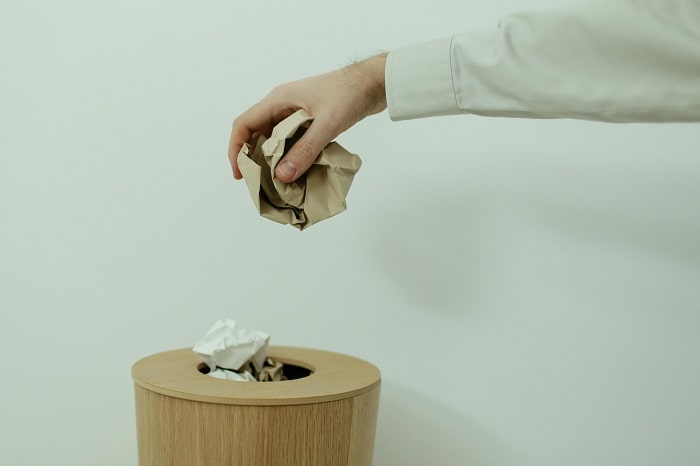Looking for the best tips for decluttering? Clearing out clutter can feel overwhelming, like taming a beast. For many people, the idea seems straightforward, but facing packed closets and sentimental items can quickly become challenging. Fortunately, you don’t have to face this alone, and with a few proven strategies, you can conquer the clutter once and for all. Decluttering isn’t just about having a tidy home; it’s about creating a space that feels peaceful, manageable, and truly yours. Here are the best tips for decluttering to help you tackle the clutter and create a home that feels calm and inviting.
1. Clearing Out Clutter: Identify the Source of Your Overwhelm
If you’re struggling with clearing out clutter, start by identifying the most overwhelming areas. The feeling of overwhelm often comes from not knowing where to start or facing emotional attachment to items. To break through, first identify the main sources of clutter and pinpoint what’s holding you back.
Tips for Identifying Clutter Sources
- List Major Clutter Areas: Make a quick list of the most cluttered areas in your home. It could be the basement, bedroom, closet, or kitchen. Seeing it written down helps you see where to focus first.
- Acknowledge Emotional Clutter: Sentimental items or gifts from loved ones often carry emotional weight, making them difficult to part with. Recognize which items you’re holding onto for emotional reasons to address them with care.
- Pinpoint the Barriers: Are you overwhelmed by decision fatigue, lack of time, or too many items? Understanding these barriers helps you plan effective decluttering sessions.
Identifying the sources of your clutter overwhelm provides clarity and sets the stage for a smoother, more intentional decluttering process.
2. Best Tips for Decluttering: Set Clear Goals for Success
Before diving into decluttering, it’s helpful to set specific goals for each room. Knowing what you want to achieve helps keep you on track and prevents the overwhelm that comes from aimless sorting.
How to Set Effective Decluttering Goals
- Visualize the Ideal Space: Think about how you want each room to look and feel once it’s decluttered. This vision will keep you motivated and focused.
- Create Purpose for Each Room: Define what each room’s function will be—whether it’s for relaxation, work, or family gatherings. Let this purpose guide what you choose to keep in each space.
- Set Small, Achievable Goals: Break down the process into mini-goals, like clearing a specific drawer or a single shelf. Completing small areas gives you quick wins and builds momentum.
Goal-setting makes the process purposeful and reminds you why decluttering is worth the effort, helping you stay motivated as you work through each room.
3. Best Tips for Decluttering: Start Small and Build Momentum
One of the best tips for decluttering is to set small, manageable goals to build confidence and momentum.The thought of tackling an entire room can be intimidating. Instead, start with one small area, like a drawer or a shelf, to ease into the process and build confidence. Starting small makes it easier to build a sense of accomplishment, which can help propel you forward.
Ideas for Small Decluttering Wins
- Begin with a Junk Drawer: Many homes have a catch-all drawer filled with random items. It’s a manageable space to start with, and clearing it out feels immediately rewarding.
- Declutter a Single Shelf or Cabinet: Pick one shelf in a closet or kitchen cabinet and focus solely on that area.
- Set a Timer for 15 Minutes: Spend just 15 minutes decluttering. When the timer is up, stop and take a break, or if you’re energized, move on to the next spot.
Starting with small areas reduces the feeling of overwhelm and helps you gain confidence in making decisions about what to keep or let go.
4. Embrace the “One-In, One-Out” Rule
A practical strategy for keeping clutter at bay long-term is the “One-In, One-Out” rule. This simple rule helps prevent new clutter from accumulating, making it easier to manage belongings as you continue decluttering.
How to Use the One-In, One-Out Rule
- Set a Boundary for New Items: For every new item you bring into your home, commit to removing one similar item. For instance, if you buy a new shirt, donate an old one.
- Create a Habit for Regular Decluttering: Each time you make a purchase, make it a routine to assess if something else can go.
- Apply It to Gifts and Keepsakes: If you receive a new item as a gift, see if there’s an older item that’s lost its significance.
This rule keeps clutter manageable, as it encourages a balanced flow of items in and out of your home, preventing unnecessary buildup.
5. Decluttering Categories: The Key to Clearing Out Clutter
One of the most effective decluttering methods is tackling items by category, rather than by room. This approach, popularized by Marie Kondo, helps you see the quantity of items you own, making it easier to let go of duplicates and items you don’t need. Clearing out clutter by category, such as clothes or books, can simplify the process and keep you focused.
Common Decluttering Categories
- Clothes: Go through all your clothing at once, from jackets and pants to socks and accessories.
- Books: Gather all the books in your home and decide which ones you truly want to keep.
- Kitchenware: Sort through dishes, appliances, and utensils to decide what’s essential.
Decluttering by category helps you stay focused and reduces the chances of re-cluttering different areas of your home.
6. Set Up a Donation Station to Simplify Letting Go
Having a designated spot for donation items can make the process of letting go easier and less overwhelming. A donation station simplifies decision-making and keeps the flow of items moving out of your home.
Tips for Creating a Donation Station
- Choose a Dedicated Area: Set aside a box or bag for items you intend to donate and keep it in an accessible spot, like a closet or near the entryway.
- Establish a Donation Routine: Schedule regular drop-offs to donation centers or charity shops to keep your space clear and prevent donation items from piling up.
- Encourage the Whole Family to Participate: If you live with family or roommates, invite them to add items they’re ready to part with to the donation station.
Having a consistent system for donations helps streamline the decluttering process and makes it easier to part with items without delay.
7. Best Tips for Decluttering: Overcome Decision Fatigue with a ‘Maybe Box
Decision fatigue can make decluttering exhausting, especially when it comes to sentimental or uncertain items. A “Maybe Box” is a helpful tool to hold items you’re undecided about, allowing you to keep moving forward without getting stuck on tough choices.
Using the Maybe Box Effectively
- Limit Its Size: Use a small box for “maybe” items to keep it manageable and avoid too much accumulation.
- Set a Time Limit: Revisit the Maybe Box after a few weeks or months. If you haven’t used or missed the items, it may be easier to let them go.
- Use It Sparingly: Don’t overfill the Maybe Box. It’s meant for a small number of challenging items, not to store large quantities.
The Maybe Box reduces decision fatigue, allowing you to defer tough decisions without stalling the entire decluttering process.
8. Take Frequent Breaks to Prevent Burnout
Decluttering can be both mentally and physically draining, so taking breaks is essential to stay energized and motivated. Working in short, manageable sessions makes it easier to avoid feeling overwhelmed.
How to Structure Decluttering Breaks
- Work in 20- to 30-Minute Intervals: Set a timer for focused work, followed by a short break.
- Use Breaks to Reflect on Your Progress: Take a moment to appreciate your progress, even if it’s small. Reflecting on accomplishments can renew motivation.
- Stretch and Hydrate: Decluttering involves physical movement, so stay hydrated and stretch to keep energy levels up.
Taking breaks is one of the best tips for decluttering, helping you stay energized and motivated throughout the process.
9. Practice Gratitude for What You Keep
As you let go of clutter, practicing gratitude for the items you choose to keep can help you feel satisfied with a simpler, more intentional home. This practice reinforces your values and helps shift focus from what you’re letting go of to what’s truly meaningful.
Ways to Practice Gratitude During Decluttering
- Reflect on Each Item’s Purpose: For each item you keep, think about how it serves you, whether it’s functional, beautiful, or sentimental.
- Embrace Quality Over Quantity: Focus on quality items that bring joy or utility, appreciating them for their role in your daily life.
- Celebrate a Lighter Space: After each decluttering session, take a moment to enjoy the newly cleared space and the peace it brings.
Practicing gratitude adds a positive, mindful dimension to decluttering, helping you appreciate your decisions and reduce the desire to acquire unnecessary items in the future.
Conclusion: Tame the Decluttering Beast and Embrace a Calmer Home
Decluttering doesn’t have to be an overwhelming or endless battle. With the right strategies—like starting small, setting clear goals, and using tools like the One-In, One-Out rule and Maybe Box—you can gradually tame the decluttering beast and take control of your space. Each step you take will create more room for the things that truly matter, allowing you to enjoy a home that’s peaceful, manageable, and tailored to your needs. Clearing out clutter might feel like a big task, but every small step you take brings you closer to a lighter, more organized home.
Decluttering isn’t just about a tidy space; it’s about clearing away distractions and making room for what you value most. So, start with one drawer, one shelf, or one category, and know that every small step brings you closer to a home that helps you breathe easier and live more fully.

